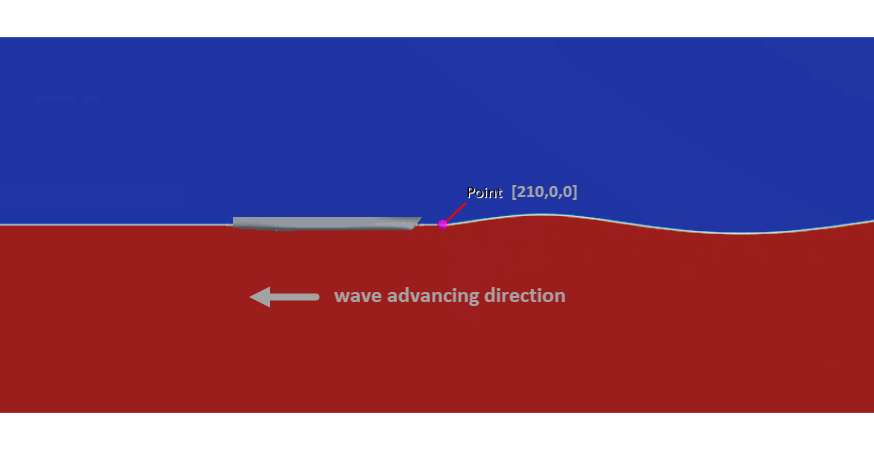Defining the Fluid Phases and VOF Waves
To define the fluid, you create the air and water phases. To define the waves, you create a fifth-order wave, which is modeled with a fifth-order approximation to the Stokes theory of waves. A fifth-order wave resembles a realistic wave. The wave profile and the wave phase velocity depend on the water depth, wave height, and current.
-
Right-click the node and select .
To create a fifth-order wave:
- Right-click the node and select .
To link the fifth-order wave, you create a Linked
VOF Wave 1. You apply Linked VOF Wave 1
associated field functions as boundary conditions. With this approach, when you
change the VOF wave specifications later on, you do not need to update the field
functions for all the relevant boundaries.
- Right-click the node and select
-
Define the fifther-order VOF wave settings:
The VOF Multiphase model uses the
high-resolution interface capturing scheme to give an accurate approximation of the
volume fraction at cell faces and improve the resolution of the
interface.
-
Expand the Volume of Fluid (VOF) node and set the
following properties:
Node Property Setting HRIC CFL_I 50.0 CFL_U 100.0 Angle Factor 0.15 Adaptive Mesh Interpolation Option Sharp Reconstruction This combination of settings ensures that there is a second order HRIC scheme for large Courant Numbers. Setting an Angle Factor of 0.15 is the recommended best practice for simulating ocean waves.
-
Expand the node, and set the following properties:
Node Property Setting Pressure Method Field Function Scalar Function Turbulence Intensity Value 1.0E-5 Turbulent Viscosity Ratio Value 1.0E-4 Velocity Method Field Function Vector Function Volume Fraction Method Composite N-1 Method Field Function Scalar Function - Save the simulation.

